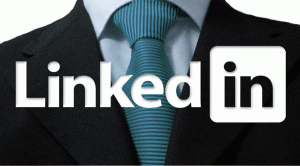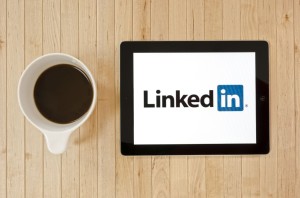Your #Career : 5 Reasons You’re Not Hearing Back from #Recruiters (Prospective Company)……There is So Much About the Recruitment Process that is Beyond Any of your Control. Control the Parts of the Process that you Can, and Take the Rest in Stride!
Not hearing back from recruiters can chip away at our confidence and motivation to continue a job search.
Rather than getting discouraged, let’s look at some common reasons recruiters might not be calling you back and discuss your possible course of action to see better results.
1. Your Resume
Your resume is the first critical step to getting you through the door. Some common resume mistakes include:
Format: Color, pictures, funky fonts, wasted white space, misaligned paragraphs, and inconsistency all create an unfriendly experience for a recruiter
Grammar: 58% of recruiters will automatically dismiss a candidate over typos. Make sure to always print your resume out and have someone read it over!
Content: Your professional story and accomplishments should stand out immediately on your resume. If the bullet points are not relevant to the job, it will serve as a distraction.
Consider your resume as a marketing piece that is constantly evolving. Don’t wait until you are unemployed to build your rockstar resume, as this should be a continuous practice.
Like this Article ? Share It ! You now can easily enjoy/follow/share Today our Award Winning Articles/Blogs with Now Over 2.5 Million Growing Participates Worldwide in our various Social Media formats below:
FSC LinkedIn Network: www.linkedin.com/in/fscnetwork
Facebook: http://www.facebook.com/pages/First-Sun-Consulting-LLC-Outplacement-Services/213542315355343?sk=wall
Google+: https://plus.google.com/115673713231115398101/posts?hl=en
Twitter: Follow us @ firstsunllc
Question: Want the ‘the best/current articles/blogs on the web’ on Job Search, Resume, Advancing/Changing your Career, or simply Managing People?
Answer: Simply go to our FSC Career Blog below & type(#career, #leadership, #life) in Blog Search: https://www.firstsun.com/fsc-career-blog/
What Skill Sets do You have to be ‘Sharpened’ ?
Continue of article:
2. Your LinkedIn Profile
Think of your LinkedIn profile as an extension of your resume, and landing page for recruiters to see what you’re all about. When it comes to LinkedIn, two red flags for recruiters include:
- Having an incomplete or unprofessional LinkedIn page: Your profile is a reflection of your personal brand. Having a sloppy, incomplete, or unprofessional page will leave a bad first impression with a recruiter.
- When your resume and LinkedIn don’t align: If the dates and titles on your LinkedIn don’t match up, this will raise concerns with recruiters and make them question your level of detail, or how truthful you’ve been about your work experiences.
Make sure your LinkedIn profile has a dynamic headline with up to date and accurate information. Like your resume, it must be perfectly formatted, with a professional headshot, and no typos! Highlight your achievements and make sure your skills are listed. There are so many ways to up your LinkedIn game, so don’t miss out on this low hanging fruit!
3. You’re not qualified
Unfortunately, you simply might not be qualified for the job you’ve applied to. It’s possible that not all the criteria required for the job was not listed, or the needs of the job have changed. Take the time to properly evaluate the position and consider if there is a strong enough alignment between your credentials and job requirements.
If you’re not qualified on paper, but know you could still add value to the organization through this position, you can always try bypassing the recruiter by reaching out directly to the hiring manager through LinkedIn. This way, you can sell yourself directly to the decision makers and demonstrate how your work has consistently led to successful outcomes.
4. The job was put on hold
Candidates can often make it far down the interview process before the organization decides to put the job on hold. Reasons for this can vary from lack of internal agreement about the role, hiring freezes, or changing needs of the organization.
Ideally, the recruiter should communicate any changes, but unfortunately, this is not always the case. There is not much you can do besides follow up with the recruiter and tactfully ask for an update.
5. An offer was made to another candidate
The competition for most jobs is fierce! Typically, a recruiter will consider a handful of candidates before narrowing it down to one person. Additionally, an internal applicant might have appeared and been given preference for the role.
6. Your interview didn’t go as well as you thought
Evaluating ourselves and our performance objectively is quite challenging, even for the best and the brightest of us. Think back to your interview, and really reflect on how things went.
The only way to really make sure you’re performing at your best is to prepare, prepare, and prepare! Ask for feedback whenever possible or consider having a friend do a mock-interview with you. Constructive criticism is important and the sooner you understand where you’re going wrong, the sooner you can make improvements!
There is so much about the recruitment process that is beyond any of our control. Though it can feel like a personal hit when a recruiter ignores your efforts, remember that a big organization can receive up to 900 applications for a single job posting. Control the parts of the process that you can, and take the rest in stride!
Stacy Pollack is a Learning Specialist with an MA in educational technology. She is passionate about building leadership programs that engage and contribute to the success of her organization. She loves to share her perspective on job hunting, career building, and networking for success. Connect with her onLinkedIn or Twitter.
GlassDoor.com | March 20, 2018 | Stacy Pollack












